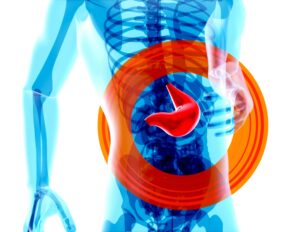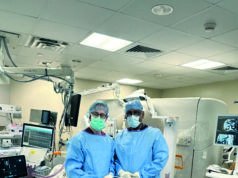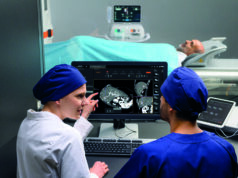 Initially unablatable patients with synchronous colorectal liver metastases (sCRLM) who successfully converted to ablatable status and underwent curative-intent microwave ablation (c-MWA) achieve comparable intrahepatic progression-free survival (ihPFS) and overall survival (OS) to initially ablatable cases undergoing radical MWA (r-MWA).
Initially unablatable patients with synchronous colorectal liver metastases (sCRLM) who successfully converted to ablatable status and underwent curative-intent microwave ablation (c-MWA) achieve comparable intrahepatic progression-free survival (ihPFS) and overall survival (OS) to initially ablatable cases undergoing radical MWA (r-MWA).
These were the conclusions drawn from a recent study published in the journal Clinical Radiology led by Liemei Chen and colleagues from the Sun Yat-sen University in Guangdong, China. They write that, due to the increased utilisation of preoperative chemotherapy and the emergence of new targeted therapies, there has been a “notable increase in tumour response rates”. Thus, providing an opportunity for an initially unablatable or inoperable subset of patients to potentially receive curative treatment.
The authors detail that 102 patients with initially unablatable sCRLM who underwent chemotherapy followed by MWA between 2013 and 2021 were enrolled in the study. According to ‘ablatability criteria’ defined by the authors as five or fewer tumours and tumours 3cm or smaller, patients meeting these criteria received c-MWA, while those exceeding these markers received palliative-intent MWA (p-MWA).
In their findings, Chen et al state that the ihPFS of the p-MWA group was significantly shorter than that of the c-MWA and r-MWA groups (5.1 vs. 15 and 24.8 months). The OS did not significantly differ between the three groups (53, 66.3, and 78.5 months); however, after demographic matching, the c-MWA and r-MWA groups demonstrated similar ihPFS (15 vs. 18.9 months) and OS (66.3 vs. 64.7 months), with no statistical difference in local tumour progression per lesion (6.4% vs. 7.6%).
Further, the authors identified that the p-MWA group had the highest complication rate (48.5% vs. 32.9% and 15.2%) and local tumour progression per-patient rate (44.8% vs. 20.5% and 9.9%, respectively) compared to the c-MWA and r-MWA groups.
In their discussion of the results, Chen et al suggest that tumour number and size are “not absolute contraindications for MWA with curative intent” and the ablatability of CRLM should be “continuously reassessed during conversion chemotherapy”. They note that all initially unablatable patients who underwent MWA following chemotherapy, irrespective of their varying ablatability and even in patients who failed conversation therapy, resulted in a “notably satisfactory” median OS of 53 months.
“These findings suggest that such patients may derive survival advantages from MWA interventions, aligning with prior research indicating that local treatment by ablation with or without resection can improve long-term OS and PFS in patients with unresectable CRLM following chemotherapy compared to those who received chemotherapy alone,” Chen and colleagues write.
The authors draw attention to several limitations of their study, noting discrepancies across carcinoembryonic antigen (CEA) levels, tumour distribution and tumour size between groups. However, Chen and colleagues do not believe that these variations in overall patient demographics significantly impacted the comparison of survival outcomes across groups.









